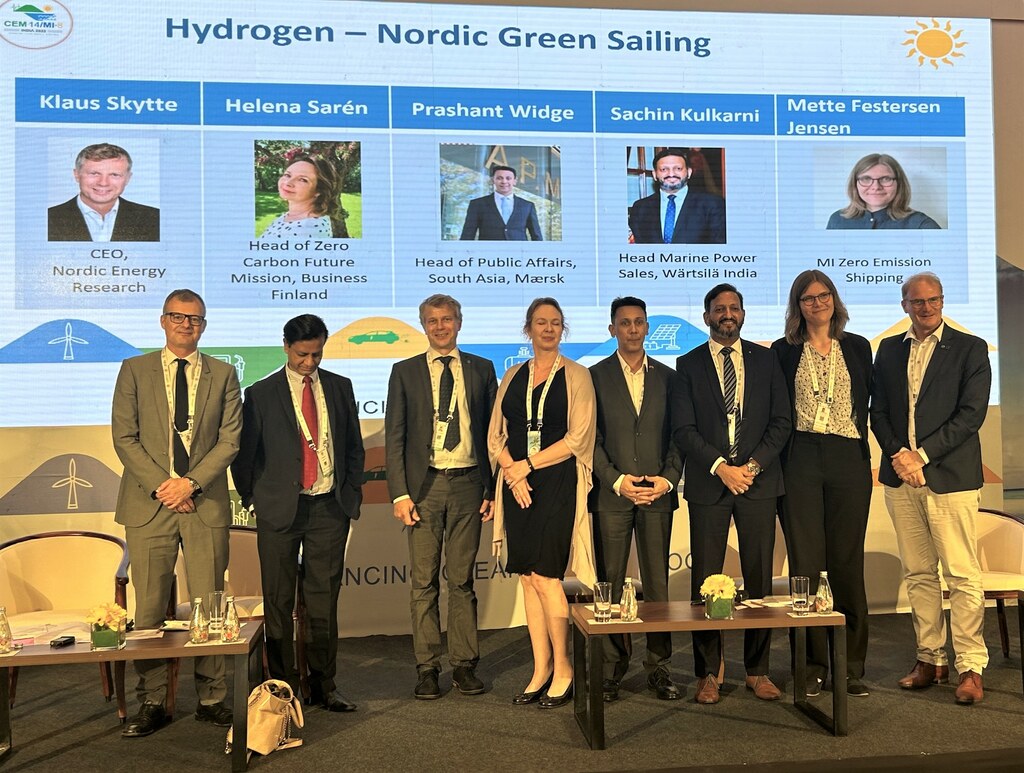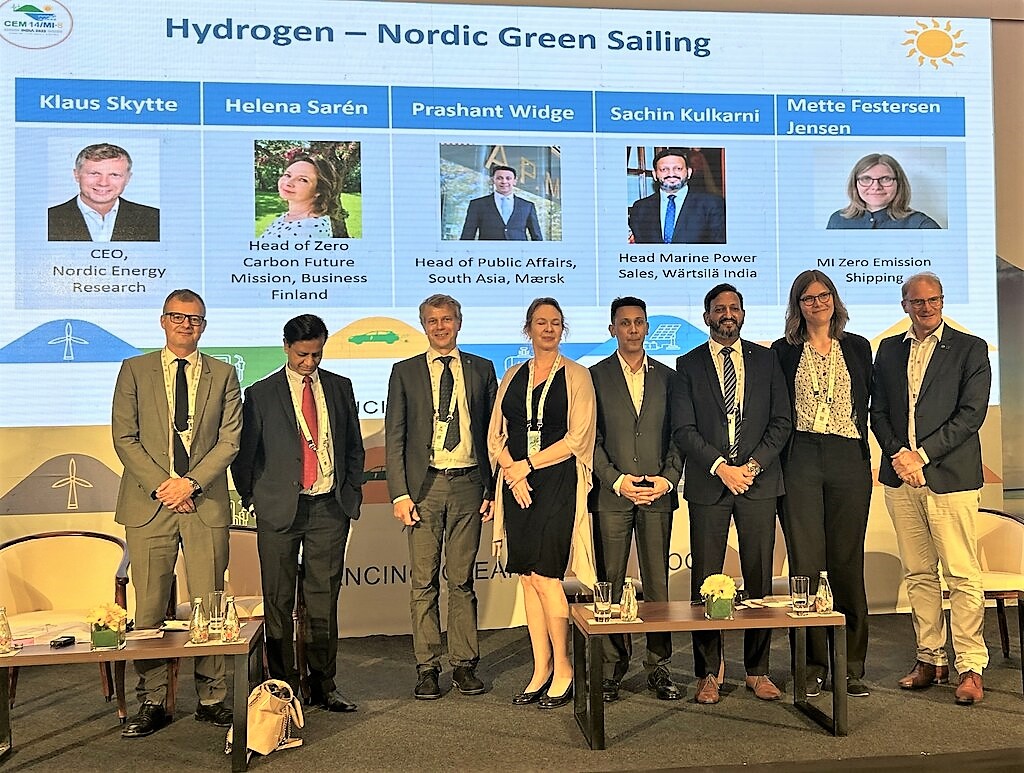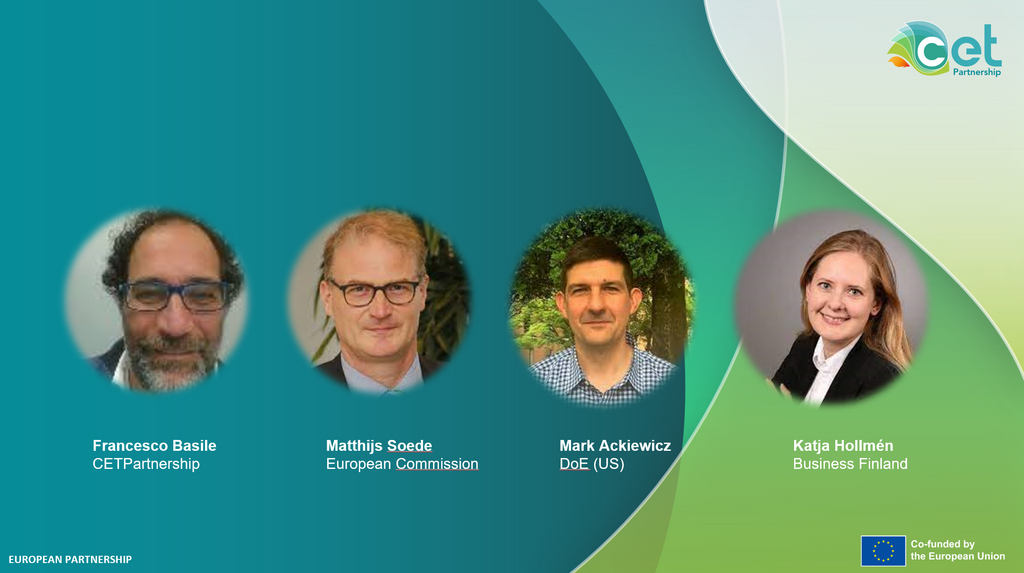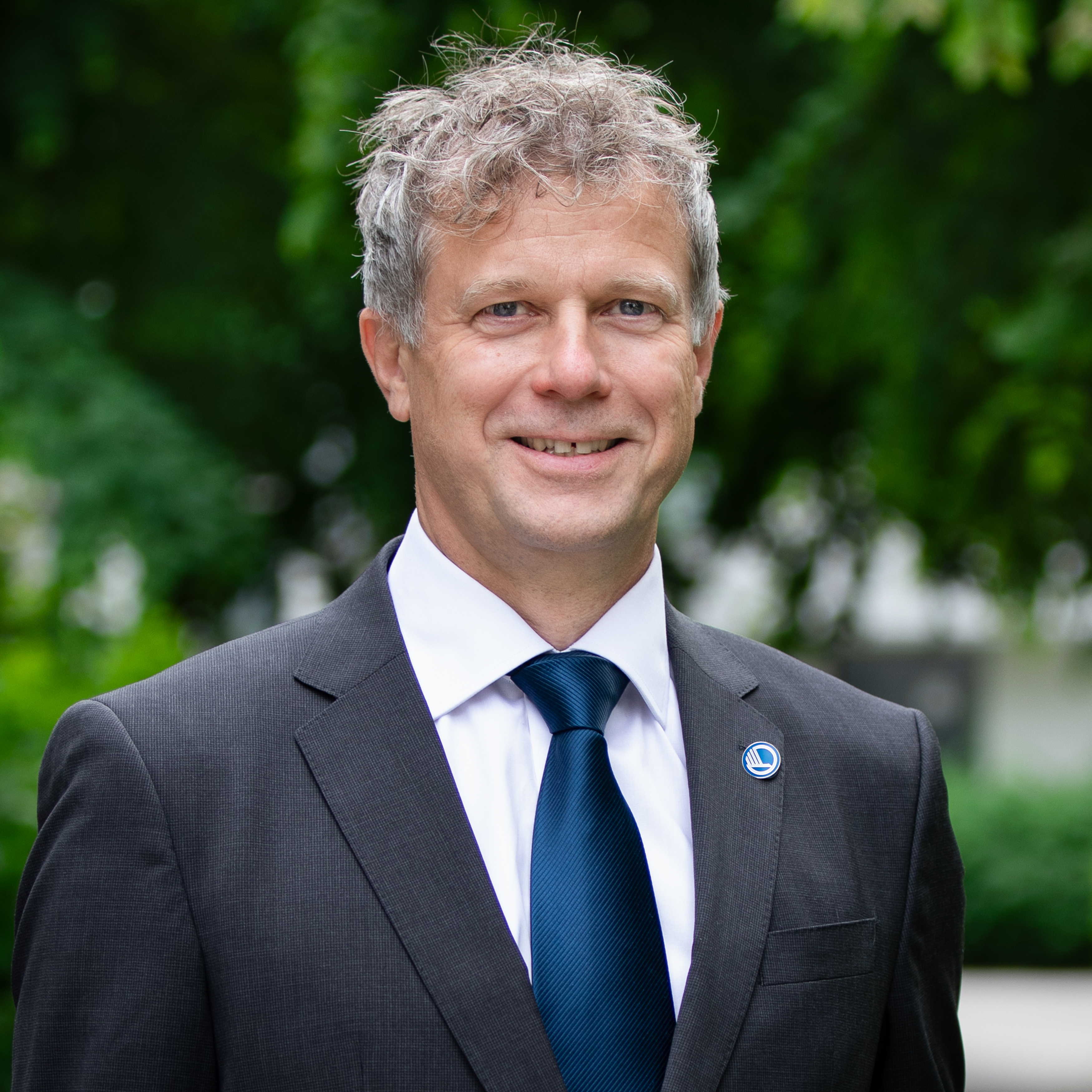
Nordic hydrogen solutions to global challenges
On 19 and 20 July, Nordic Energy Research participated in the annual Clean Energy Ministerial and Mission Innovation meeting in Goa, India, organizing three side events that put focus on hydrogen, green…
On 19 and 20 July, Nordic Energy Research participated in the annual Clean Energy Ministerial and Mission Innovation meeting in Goa, India, organizing three side events that put focus on hydrogen, green shipping, and the Clean Energy Transition Partnership.
CEO Klaus Skytte and Adviser Jacob Munch hosted the side events at the conference. The first and second event took place during the session “Hydrogen – the Nordic rally to the valley and Nordic green sailing“, which asked how closer cooperation and knowledge sharing between the Nordic and other countries can speed up the rapid innovation and deployment of Hydrogen Valleys.
“We had some very fruitful discussions on the challenges and opportunities with representatives from the Nordic countries, the two MI missions on respectively Clean Hydrogen and on Zero Emission Shipping as well as distinctive industry stakeholders,” says Klaus Skytte. “The panel debate enlightened us on the rapidly evolving landscape of hydrogen and green shipping in a Nordic context and how we can use those insights as a foundation for further research co-operation and policy formation.”

Hydrogen – Nordic green sailing
Further development of Hydrogen Valleys is a key enabler for decarbonizing sectors like industries as well as maritime transportation.
The Nordic region is jointly in an excellent position to deploy hydrogen valleys due to ambitious energy and climate policy goals, as well as extensive research programmes, e.g. the Nordic Hydrogen Valleys as Energy Hubs Programme with projects focusing on Nordic Hydrogen Valleys as Energy Hubs. Their scope is to address barriers and opportunities for hydrogen valleys to become energy hubs in collaboration with industries and land-based and maritime transport.
Clean energy transition through intensified collaboration
The third side event, “CETP – A European Approach to an International Cooperation for the Clean Energy Transition”, fostered a productive atmosphere, generating meaningful discussions around the CETPartnership and international cooperation.
“The event was an enlightening gathering of esteemed panelists and an engaged audience, dedicated to accelerating the clean energy transition through closer collaboration between the CETPartnership and Mission Innovation,” says Jacob Munch, who moderated the event.
The panelists’ insights on internal cooperation and clean energy advancements resonated well, complemented by an inspiring keynote speech from Rosalinde van der Vlies, Vice Chair of the Mission Innovation Steering Committee and EC Director in DG Research & Innovation. She opened the event by providing a comprehensive overview of the European Commission’s vision for clean energy transition and the importance of partnerships in advancing Mission Innovation. Her speech set the tone for the discussions that followed and highlighted the need for international cooperation in addressing global energy challenges.

Francesco Basile, Representative for the CETPartnership Transition Initiatives, shared valuable experiences and insights into how the TRIs effectively incorporated Mission Innovation into their work. His emphasis on fostering dialogue between academia, industry, and governments resonated with the audience, underscoring the importance of cross-sectoral collaboration.
Matthijs Soede, Director of the Clean Hydrogen Mission at the European Commission, highlighted the pivotal role of partnerships in accelerating the deployment of clean energy technologies. He emphasized that through collaboration, the CETPartnership and Mission Innovation can advance shared goals more effectively.
Mark Ackiewicz, representing the United States Department of Energy (DoE), showcased the DoE’s active involvement in the CETPartnership Joint Calls. His insights shed light on how partnerships can help bring Mission Innovation to fruition, emphasizing the significance of broader participation for collective success.
Katja Hollmén, representing Business Finland as a funding partner in the CETPartnership, provided valuable perspectives on the importance of private sector involvement in advancing the clean energy transition. Her insightful quote, “Think about why your country is involved in Mission Innovation. For the same reasons you’re involved in Mission Innovation, you should be involved in the CETPartnership,” resonated with the audience, underscoring the need for authorities to take part in the CETPartnership.
The panel discussion spurred enthusiasm from the audience, who actively participated in the Q&A session. The questions raised underlined the urgency of closer collaboration between the CETPartnership and Mission Innovation in tackling global energy challenges. This enthusiastic interaction further strengthened the resolve to work collaboratively on shared goals.
In the wake of the event’s success, the organizers have initiated concrete efforts to intensify collaboration between the two entities. The commitment to working together on clean energy projects and initiatives represents a significant step forward in accelerating global clean energy transformation. Overall, “CETP – A European Approach to an International Cooperation for the Clean Energy Transition” was a remarkable success, leaving participants inspired and energized to take concerted action towards a sustainable and clean energy future.

